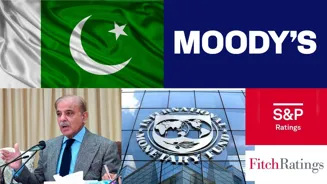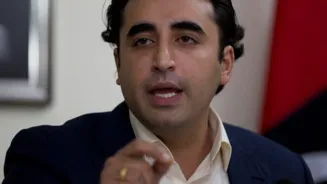US-based credit rating agency Moody’s on Wednesday (14 August) upgraded Pakistan’s long-term issuer rating to Caa1 from Caa2 and maintained a “stable”
outlook. The decision comes as Pakistan’s foreign exchange reserves climbed to $14.3 billion in July 2025, inflation fell to 4.1 per cent, and reforms under the $7 billion, 37-month IMF Extended Fund Facility (EFF) gained traction, said a report by India Today. Explaining the move, Moody’s said, “The upgrade to Caa1 reflects Pakistan’s improving external position, supported by its progress in reform implementation under the IMF Extended Fund Facility.” The agency, however, cautioned that “debt affordability remains one of the weakest among rated countries” and warned of ongoing governance and political risks. The upgrade aligns with similar actions by other major agencies. On 24 July, S&P Global Ratings raised Pakistan’s credit rating to B- from CCC+, while Fitch Ratings followed suit in April. Both maintained a stable outlook, underscoring cautious optimism. Prime Minister Shehbaz Sharif welcomed the development, saying the improved credit rating shows that “economic policies are heading in the right direction.” Finance Minister Mohammed Aurangzeb added that there was room for the central bank to cut the key policy rate from the current 11 per cent, pointing to positive economic indicators. Pakistan’s economic indicators have markedly improved in the past year. Reserves rose from $9.4 billion in August 2024 to $14.3 billion by July 2025. Inflation, which peaked at 37.97 per cent in May 2023, fell sharply to 0.3 per cent in April 2025 before stabilising at 4.1 per cent in July. GDP growth rebounded from -0.2 per cent in FY2023 to 2.5 per cent in FY2024, with an estimated 2.7 per cent for FY2025. Bond markets reacted positively, with Pakistan’s international bonds climbing as much as 1 cent to trade between 90 and 100 cents on the dollar, their highest since early 2022. At that time, fears of a debt crisis had pushed them down to about 30 cents. Still, challenges persist. The country’s debt burden reached a record $267 billion in May 2025, the highest in its history. The State Bank of Pakistan’s decision on 30 July to keep interest rates unchanged surprised analysts expecting a cut, with rising energy prices cited as a risk to the inflation outlook. The next monetary policy announcement is scheduled for 15 September.













